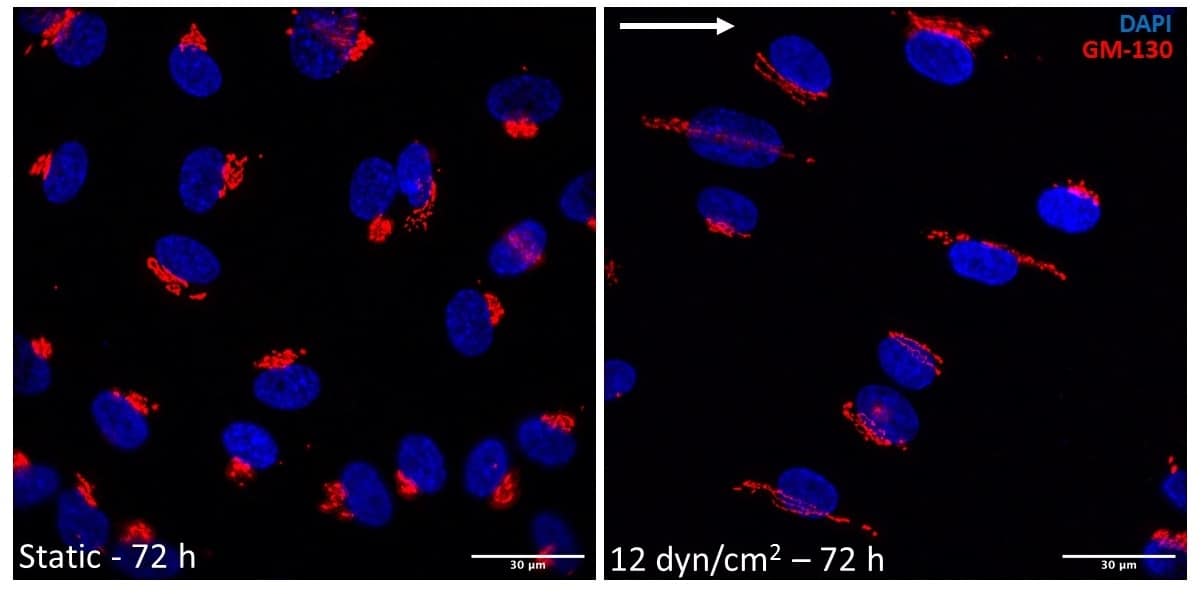Atherosclerosis is a chronic inflammatory disease characterised by the accumulation of fatty plaques at focal regions of the vasculature. This results in occlusion of the vessel and more severe cardiovascular diseases such as thrombosis. The focal nature of atherosclerosis is largely dictated by the haemodynamic forces exerted on the endothelial layer lining the vessels, known as shear stress. High shear stress, characterised by laminar flow, induces an atheroprotective endothelial phenotype. Low shear stress, characterised by disturbed flow often found at bifurcations and branching points, induces an atheroprone endothelial phenotype. The endothelial cells at regions exposed to low shear stress become activated and secrete pro-thrombotic and pro-inflammatory mediators that promote the progression of atherosclerosis. Many of these mediators are stored in endothelial-specific storage vesicles called Weibel-Palade bodies (WPBs). The trafficking and secretion of WPBs is required in a normal response to vascular injury. WPBs therefore contain pro-inflammatory and pro-thrombotic cargo such as von Willebrand Factor (vWF), P-selectin and angiopoietin-2. Inappropriate and untimely secretion of WPBs however, leads to the unnecessary recruitment of platelets and immune cells resulting in an increased susceptibility of this region to cardiovascular disease. An in vitro Ibidi pump system was used to simulate shear stress at different regions of the vasculature by exposing cultured endothelial cells to different flow conditions. Endothelial cells exposed to high shear stress (12 dyn/cm2) for 72 hours aligned with the direction of flow. The Golgi apparatus, responsible for the production of WPBs, increased in length by 23% (n = 2) compared to static conditions. The Golgi also became more fragmented as shown in figure 1, which has been shown to alter subsequent WPB morphology. This indicates that shear stress could be affecting the production of WPBs. The effect of varying shear stress on the subsequent WPB trafficking and secretion using the Ibidi pump system will also be measured using live-cell imaging, as well as the extent to which this contributes to lesion development in atherosclerosis using in vivo mouse models. Current research on the effect of flow on WPBs is limited. A better understanding of the molecular mechanisms which underlie the effect of flow on WPBs will allow us to exploit these mechanisms for potential therapeutic benefit in the treatment of atherosclerosis.
Physiology 2019 (Aberdeen, UK) (2019) Proc Physiol Soc 43, PC252
Poster Communications: The Effect of Flow on Weibel-Palade Body Secretion and its Contribution to Atherosclerosis
A. Money1, D. Beech1, J. Schneider1, L. McKeown1
1. LICAMM, University of Leeds, Leeds, United Kingdom.
View other abstracts by:
Figure 1 - Elongation and fragmentation of Golgi apparatus after exposure to high shear stress (right) for 72 hours (arrow indicates direction of flow), compared to static conditions (left).
Where applicable, experiments conform with Society ethical requirements.

